
Flu or more properly Influenza is one of those characteristic complaints as autumn and ultimately winter come about. If you have a cold, it is a much more common, less distressing condition but it still makes us feel unwell. Generally, cold and flu strikes between October and March but it is not uncommon to have summer colds which are regarded as the most annoying.
Many of us fall back on food to help get us through a cold and flu season because they contain various compounds which help combat these unpleasant diseases. Foods provide vitamins and minerals, proteins and fibre which all have specific benefits in fighting disease generally.
We will first look at what the symptoms are of these two related respiratory diseases. Then we will look at the special foods which are claimed to help combat these disease.
What Are The Symptoms Of Cold And Flu?
How do we experience the symptoms ? The night fevers, sore throat, congested nasal passages and sneezing are all symptomatic of this debilitating disease. Flu, unlike a common cold is much more dramatic in its impact. Gastrointestinal disorders, loss of balance and giddiness, headache, reduced libido and severe aches and pains are characteristic of flu. You might experience some of these symptoms with a cold but let’s face you can readily tell the difference by the severity alone. The morbidity alone is enough to make life with a cold and chore but there are economic consequences too.
It is estimated that about 5 to 20 per cent of all of us in the western world will have at least one cold or flu virus attack in the year. The average number for an adult is more like two to three, even four which shows how prevalent it is. A child might suffer between six and eight colds. It is still one of the leading causes of lost time through illness and can even be lethal for the elderly or immune-compromised.
Most of us will probably have a flu shot, will have a variety of medicines ranging from paracetamol, aspirin and ibuprofen for quelling the nasty fevers and chills, some cough medicine and various throat lozenges. We will undoubtedly use them too. Admittedly, there is still no cure for the common cold (and indeed flu itself).
There are currently over 200 viruses associated with cold. The Rhinoviruses account for between 30 and 40 per cent of all adult colds.
Are there any foods we can take which help combat cold and flu ?
Quite often we will reach for foods and drinks which are more comforting but have no benefit whatsoever. When we are sick, our body needs a range nutrients, vitamins and minerals to help us get over the worst of our symptoms.
Just so you know, cold and flu as terms tend to get mixed up. In all cases we are looking at evidence related to colds rather than Influenza.
Garlic For Colds And Flu
Garlic has been known by many to be a standard therapy for reducing the is of getting a cold as it is for possible preventing one. Admittedly, much more research is required to establish that fact. Allicin which gives garlic its pungency is at the heart of the bulb’s health benefits. It’s not just a powerful antioxidant because of its reactive sulphydryl and disulphide bonds, but it has important health benefits in a number of arenas like cardiovascular health, let alone blocking a nasty cold.
Josling (2001) did a study with 146 volunteers who were given a placebo or an allicin-containing garlic supplement in a capsule. The study was a double-blind one so all the participants received a capsule over 12 weeks from November to February. Anyone taking a capsule of garlic supplement enjoyed for want of a better word, less colds in terms of number and severity over that treatment period.
The general conclusion was that garlic and perhaps any allicin containing food would reduce if not prevent the attack of a common cold virus. However, the study was not well controlled as hoped in part because of the use of a rating scale to assess severity. Nonetheless, it still remains the only trial that truly offered any suggestion of garlic’s efficacy (Lissiman et al., 2014).
Since then we have been consuming garlic supplements like nobody’s business. It’s worth also pointing out that garlic through allicin promotes healthy gut flora and fauna which almost makes it sound like a prebiotic. If you have space in the garden, grow it as its extremely easy!
Honey
Honey has been used by physicians and nutritionists as a food for treating the immune system and providing much needed energy. It has a high sugar content and contains a range of antibacterial agents amongst other antimicrobial compounds. In the food industry, honey is sometimes used as a natural ingredient to preserve fruit products. In ancient Egypt, honey was used to treat wounds. It also helps to soothe sore throats and relieve coughing.
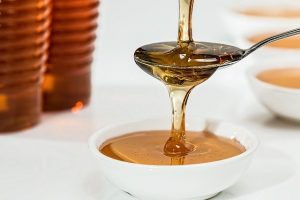
Whilst honey does not treat or cure viral diseases it will help to alleviate cold and flu symptoms.
Most people drink honey with lemon in warm water. It is an alternative detox liquid. Honey can also be added to warm milk and drunk as a nighttime beverage.
Sweet Potato
I wouldn’t normally consider sweet potato as a cold buster but being a great source of vitamin A means your skin is being prepared to robustly defend attack from any virus. Vitamin A amongst many of its benefits protects mucosal surfaces. Throat, nasal and lung linings can all benefit from enough vitamin A. Given skin or any lining is the contact point between the body and the external world, anything which helps skin integrity is welcome.
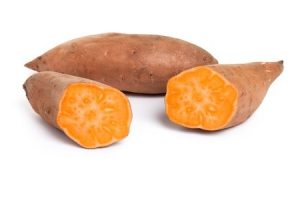
In warmer climates it is relatively easy to grow a sweet potato crop. Not so easy in northern Europe, especially the UK unless under a greenhouse.
Chicken Soup
Chicken soup has been a staple and comforting food for anyone suffering most sickness. It’s the age-old elixir that combines a great variety of nutrients. Easy to digest and containing a whole range on vitamins and minerals amongst other compounds of benefit to someone sickening from illness.
Chicken soup is a little like honey. It soothes the throat, helps with hydration, contains the valuable amino acid cysteine which is an important sulphur based amino acid and glucosamine. Whilst there is little clinical evidence to support its use in preventing colds it comes under the age-old adage of providing a great range of nutrients to feed the body. Its warming, easy to consume and readily obtainable. Cysteine is sued to treat some forms of bronchitis.
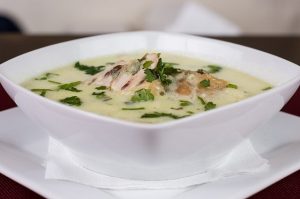
Some people take chicken soup to relive the sinuses and nasal passages. It probably helps the mucus to flow more easily and reduce stuffiness. A good alternative to sitting over a bowl of hot steaming water!
Salmon
Salmon contains vitamin D and whilst studies still cannot definitively claim vitamin D will prevent a cold there is no doubt of this vitamin’s inclusion. Any source of vitamin D is good for you, but salmon is one of the best. One piece of research showed that maintaining healthy levels of vitamin D reduced the severity of respiratory tract infections compared to those with a deficiency (Sabetta et al., 2010). Recent evidence suggests vitamin D also reduces other respiratory tract conditions like asthma.
Generally, the levels of vitamin D as represented by serum concentrations of 25-hydroxyvitamin D drop off as summer moves through to winter. It’s a consequence in the northern hemisphere of lack of sunlight and the using up of stored sources of vitamin D. Sabetta’s study indicated that a serum concentration of “38 ng/ml or higher should significantly reduce the incidence of acute viral respiratory tract infections and the burden of illness caused thereby,..”
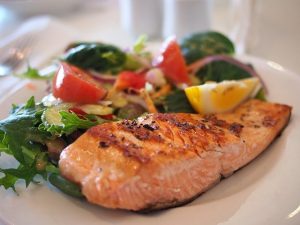
Vitamin C Containing Foods – Blackcurrant, Oranges, Lemons, Dark Leafy Greens
Vitamin C or ascorbic acid has long been associated with good health. It’s not just preventing scurvy as in olden days but supporting immunity. There is a consensus view amongst nutritionists that vitamin C shortens the time when we are sick because of the boost it provides to our immune system. Dark leafy greens include cabbage, kale, spinach, chard, rocket or arugula, parsley etc. Some fruits are excellent sources – bell peppers, chili, lemons and limes, tomatoes and grapefruit. Blackcurrant juice and cordial, orange and lemon juice are all worth consuming as beverages.
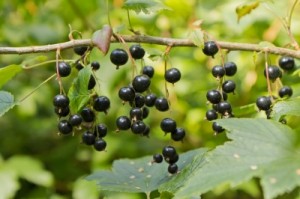
Vitamin C is often taken with zinc containing supplements because this mineral has an important biochemical function concerning immunity.
As a last word, there are some foods to avoid!
Oats
Oats are very versatile ingredients and can be mixed into a variety of products and recipes. Combine with dried fruits, skimmed milk, seeds and so on to make use of its soluble fiber. It helps with digestion, feeding our gut microbiome. It also contains some zinc which is an important mineral for our immune system. There is also a small amount of omega-3 fatty acids.
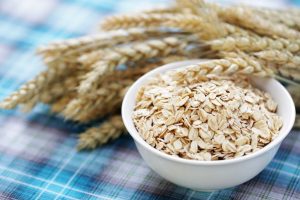
The soluble fibre from oats and indeed from other foods is great for reducing gut inflammation which can arise from all sorts of diseases. Psyllium is also another good choice. The idea is to reduce cramps, bloating and stave off the unpleasant effects of diarrhea.
Ginger
We cannot let an article go with out discussing ginger. Raw ginger has long been thought of as a food with natural antibacterial agents as well as even anticancer properties. Whilst more research is needed there is no doubt that the ginger story is developing all the time. It not only reduces the feelings of nausea it is thought that it alleviates the unpleasant sick feeling especially from flu.
In India, ginger is combined with turmeric. It is boiled along with various spices and added to water. Usually best drunk in the morning on an empty stomach. In some people it is the only food they can take.
Green Leafy Vegetables
A final nod then to eating healthily. Green leafy vegetables contains a great range of compounds including minerals and vitamins. Seek out cabbage, kale, red peppers etc. We mentioned vitamin C earlier but there are many other antioxidants to choose from. It’s a great chance to try out all those wonderful salads and start making smoothies. Don’t be put off by lurid green colours because contained within and useful quantities of vitamins A, D and E as well as vitamin K.
Let’s face it we want to give our body an opportunity to thrive not only during a cold and flu bout but also quickly recover too. If you want to try growing these vegetables just go over to our ‘Grow Your Own Food’ section.
Foods To Avoid With Colds And Flu
Too much sugar can impede the workings of the immune system. Given it needs to be at full operational capacity anything that halts or lessens the effects is to be avoided.
No alcohol. Admittedly, a whisky toddy or some in milk was grandmother’s trick but that too affects the way the liver deals with disease.
N.B. Amended article from 2nd February 2020 to include new material on various foods.
References
Josling, P. (2001). Preventing the common cold with a garlic supplement: a double-blind, placebo-controlled survey. Advances in Therapy, 18(4), pp. 189-193. PMID: 11697022
Lissiman, E., Bhasale, A. L., & Cohen, M. (2014) Garlic for the common cold. Cochrane Database Syst. Rev., 3. Nov 11;(11):CD006206. doi: 10.1002/14651858.CD006206.pub4.
Sabetta, J. R., DePetrillo, P., Cipriani, R. J., Smardin, J., Burns, L. A., & Landry, M. L. (2010). Serum 25-hydroxyvitamin d and the incidence of acute viral respiratory tract infections in healthy adults. PloS One, 5(6), e11088. Jun 14;5(6):e11088. doi: 10.1371/journal.pone.0011088.
Leave a Reply